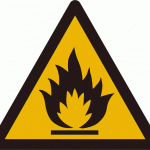Complex Regional Pain Syndrome (CRPS) is a horrendous long-term condition which causes severe, burning pain for people suffering from the disease. Although there is no officially recognized scientific cure for CRPS, understanding the condition can help you to seek treatment for it and maintain a positive outlook in the face of adversity. The infographic explains what CRPS is and what we can do about it.
You can read numerous interesting CRPS facts and statistics regarding the profile of the patients. According to the data provided, most CRPS sufferers are 30-55 years old and the average age for CRPS sufferers is 45.
What you should know is the two conditions that are defined as Type 1 or Type 2 CRPS. Although the triggers of CRPS are different between the 2 types, both have the same symptoms and go through the same stages of CRPS.
Another valuable feature of the infographic is the list of CRPS symptoms and possible causes of CRPS. Fortunately, the infographic provides information how CRPS can be treated. Those living with CRPS would be benefited from this great infographic with the advice listed.

![Common Hidden Illnesses Explained [Infographic]](https://patienttalk.org/wp-content/uploads/2016/10/Hidden-illness-2.jpg)

